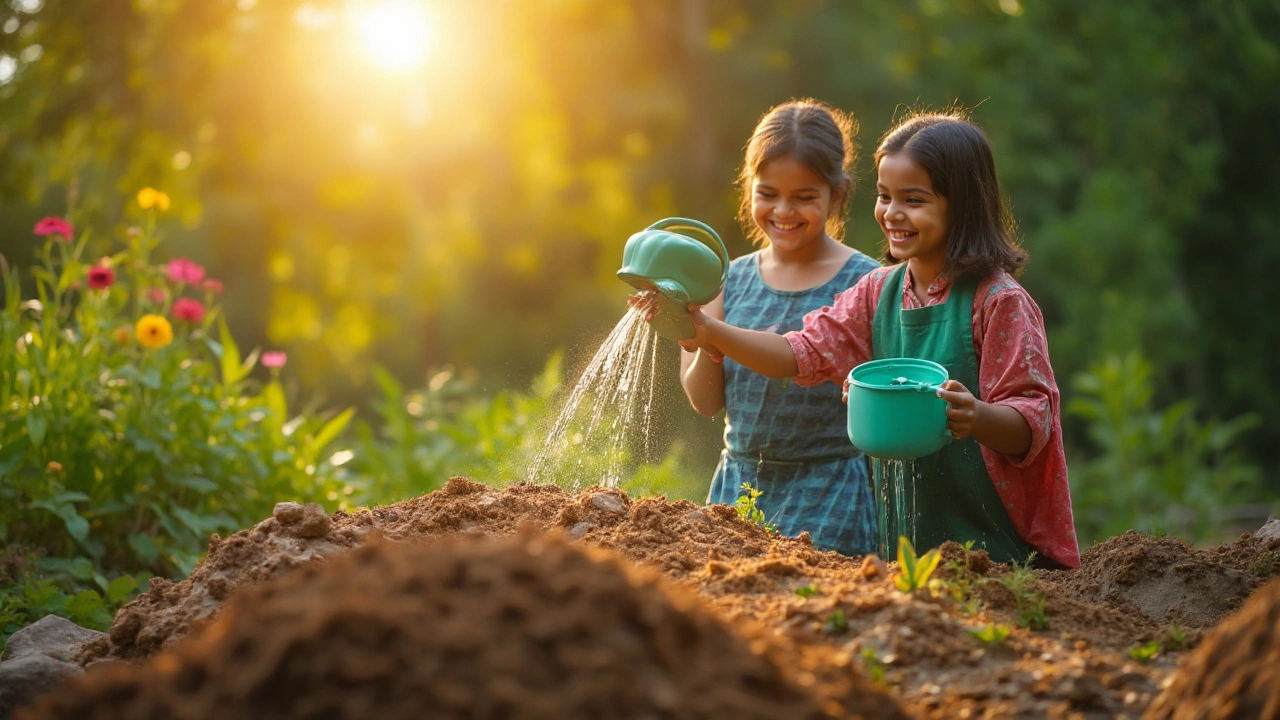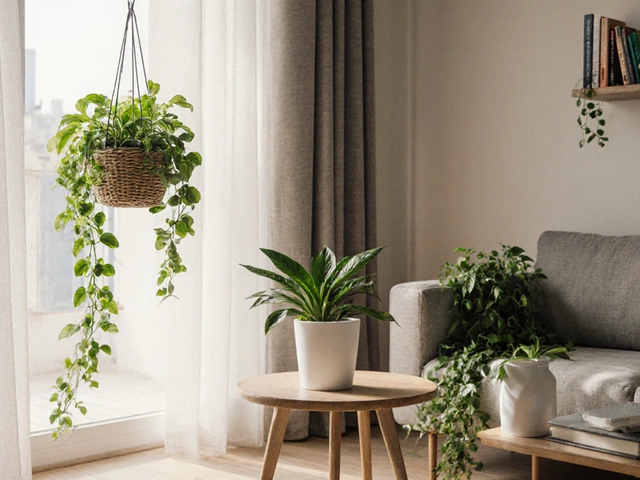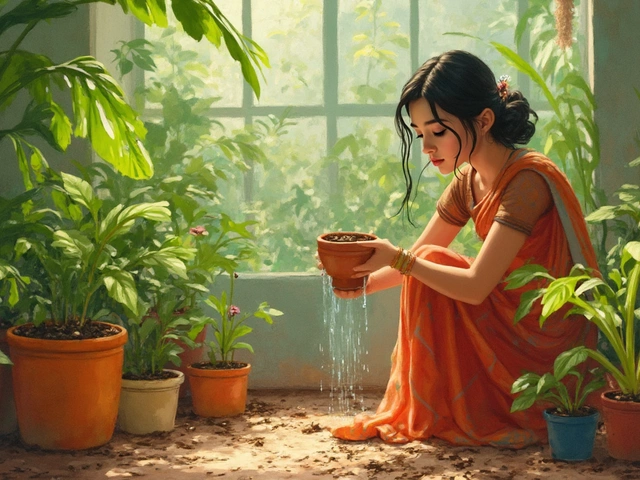The secret behind lush, vibrant gardens often lies in the quality of the topsoil. Crafting your own topsoil goes beyond simple gardening—it’s about nurturing life from the ground up. Creating topsoil may initially seem daunting, but with the right knowledge and resources, it becomes a simple and rewarding process.
In this guide, we’ll delve into the essentials of what makes topsoil invaluable to any gardener. From selecting the best ingredients to understanding the role of beneficial microorganisms, we’ll cover everything you need to know. We’ll also explore how natural additives can further enrich your soil, transforming your garden into a flourishing paradise.
By turning waste into well-balanced topsoil, you not only save money but also contribute to a healthier planet. Let’s embark on this journey to sustainable gardening together, reviving our respect for nature’s processes while enhancing our own green spaces.
- Understanding Topsoil and Its Importance
- Essential Ingredients for Homemade Topsoil
- Composting Basics and Techniques
- Integrating Microorganisms for Soil Health
- Using Natural Additives for Enrichment
- Environmental and Economic Benefits of DIY Topsoil
Understanding Topsoil and Its Importance
Topsoil is the uppermost layer of soil, usually ranging from 2 to 8 inches deep, where the majority of a plant’s roots reside. This layer is rich in organic matter and microorganisms, making it the most fertile part of the earth's crust. The crucial role of topsoil lies in its ability to house the essential ingredients that plants need to thrive, including nutrients, water, and aeration. Without quality topsoil, growing healthy plants can become a significant challenge, as it directly influences the vigor and resilience of your garden.
The quality of topsoil varies greatly depending on its composition and the area it comes from. Good topsoil is typically dark, crumbly, and filled with the organic matter needed to nourish plants. Unfortunately, due to erosion and poor agricultural practices, the quantity and quality of natural topsoil have significantly diminished over time. This depletion stresses the importance of creating and maintaining enriched topsoil, which serves as the foundation of any sustainable garden practice.
"Good topsoil ensures not only the beauty of the plant but also the longevity of the ecosystem it supports." — Dr. Elizabeth Wright, renowned soil scientist.
Interestingly, topsoil takes hundreds to thousands of years to form naturally. The slow process involves the breakdown of rocks and organic matter by climate, organisms, and the landscape itself. Given this lengthy generation timeline, it becomes evident why sustaining our existing topsoil is crucial. By taking steps to create homemade topsoil, gardeners can significantly contribute to conserving natural resources and promoting environmental sustainability. This practice lays the groundwork for using existing materials effectively and reducing the carbon footprint associated with commercial soil production and transportation.
The Role of Topsoil in Plant Health
Plants rely on topsoil not only for their nutrition but also for support and protection. The structure of quality topsoil allows air to circulate and water to penetrate easily, preventing waterlogging and promoting growth. The living organisms within topsoil, like bacteria and fungi, are essential for breaking down organic material into nutrients that plants can absorb. By maintaining a balanced mix of those organisms, topsoil acts as a natural nutrient recycler. This balance is pivotal for maintaining soil fertility, ensuring that the cycle of growth and replenishment continually supports plant health.
Essential Ingredients for Homemade Topsoil
Creating your own topsoil is like concocting an elixir for your garden—it’s about blending the right elements in just the right proportions. At its core, topsoil is a combination of mineral particles, organic matter, air, and water. Each of these components plays a vital role in building a living, breathing substrate that supports plant growth. Let's start with mineral particles. These are typically categorized as sand, silt, and clay, each with unique properties that affect the soil's texture and drainage capacity. Sand provides excellent drainage, while clay retains moisture and nutrients, balancing these creates soil that is structurally sound. It’s often said, 'Good soil is like a good cake, you need the right balance of ingredients.' This analogy beautifully underscores the need for harmony among soil components.
Next on our list is organic matter, arguably the most important ingredient of all. Think of organic matter as the nutrition powerhouse for your soil, teeming with life. It includes decomposed plant and animal materials that enrich the soil. The beauty of organic matter lies in its ability to improve the soil structure, increase its water retention capacity, and feed the microorganisms that are crucial to soil health. Compost, leaf mold, and well-rotted manure are excellent sources. Mixing these into your soil boosts fertility, ultimately leading to healthier plants. According to the Soil Science Society of America, incorporating organic matter can significantly increase crop yield, emphasizing its importance in a thriving garden environment.
Of course, our invisible friends—the microorganisms—cannot be overlooked. These tiny creatures, including bacteria, fungi, and nematodes, work tirelessly to break down organic materials, release nutrients, and manage pests. A teaspoon of healthy soil can contain up to a billion bacteria; these microorganisms are what truly bring soil to life. Encouraging a diverse microbial population is essential, as this diversity helps prevent diseases and supports plant growth. Introducing materials such as aged compost and leaf litter can nurture a microbial-friendly environment.
We should also address the physical requirements: air and water. These are perhaps the unsung heroes of soil composition. Adequate air spaces in the soil are essential for root respiration and the activities of beneficial microorganisms. This is where the importance of texture comes into play again—too compacted and the soil becomes anaerobic, smothering roots and microbes, while too loose, and it fails to retain precious moisture. Achieving this balance is where gardeners’ insights and experience come into play.
Finally, considering amendments can be beneficial depending on the initial state of your base soil components. Such amendments might include biochar to improve soil structure and increase carbon content or even gypsum to help with heavy clay soils, enhancing their drainage. According to a study from the University of California, strategic use of amendments can reduce compaction and increase soil fertility over time. Thus, understanding the natural properties of your existing soil can guide the incorporation of these additives effectively.
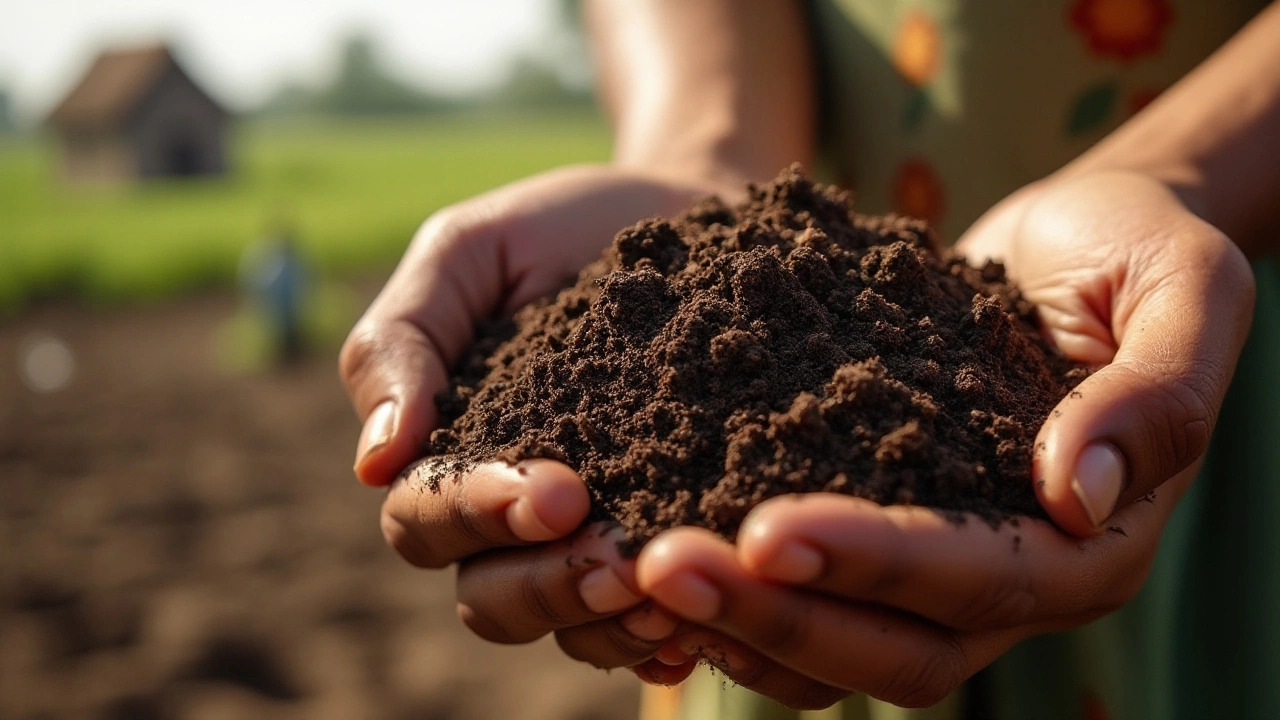
Composting Basics and Techniques
Composting serves as the backbone of creating high-quality topsoil at home. It transforms organic waste into rich, nutrient-packed soil that gardens thrive on. The process is both fascinating and straightforward, breaking down waste through a natural decomposing cycle. Essentially, composting is nature's way of recycling, turning leftover scraps from your kitchen and yard into food for your plants. To start, gather green materials such as vegetable peels, coffee grounds, and lawn clippings. These are rich in nitrogen, an essential element for forming healthy compost. Balance these with brown ingredients like dried leaves, twigs, or paper, which are carbon-rich. This combination is key to a successful composting process, providing the right environment for microbes to thrive.
Maintaining the right balance between greens and browns is crucial. Think of it as a recipe for a cake; too much of one ingredient and the end result may not be appetizing. Aim for a ratio of about three parts brown to one part green. Keep the pile moist, only as damp as a wrung-out sponge, which helps speed up decomposition. Regularly turning the compost ensures good aeration, introducing oxygen that the decomposer organisms depend on. A conventional wisdom cited by many gardening enthusiasts, and supported by institutions like the U.S. Environmental Protection Agency, is to turn the compost every few weeks to fast-track the process.
"Composting is one of the most environmentally friendly practices a gardener can adopt," states renowned environmental scientist Dr. Lena Thompson. "It not only enriches the soil but also reduces landfill waste, contributing to a sustainable future."
Knowing when your compost is ready to enrich your garden is as important as creating it. Typically, well-maintained compost can be ready in two to four months, depending on factors like the size of the compost bin and the type of materials used. Finished compost should be dark brown, crumbly, and emit an earthy aroma. Remember, patience is your best tool here. Be cautious not to add dairy products, oils, or meat, which can attract pests and slow down the process, or plants treated with pesticides, which might contaminate your compost. By implementing these simple techniques, you can enhance your gardening experience, turning what would otherwise be waste into nourishing, homemade topsoil.
To better understand how composting might impact your gardening endeavors, consider the following data. A typical small household can divert about 300 pounds of waste from landfills per year by composting—a significant contribution to reducing pollution and greenhouse gases. An alternative strategy involves the use of vermicomposting, where worms expedite the process. Although this method requires a bit more oversight, it can be incredibly efficient, particularly for those with limited space.
Integrating Microorganisms for Soil Health
To create a thriving ecosystem within your gardening space, integrating beneficial microorganisms into your topsoil is crucial. These tiny life forms—bacteria, fungi, and other microscopic organisms—play a monumental role in breaking down organic matter, turning it into nutrients that plants can readily absorb. Imagine them as the undercurrent of life in your garden, tirelessly working to maintain balance and promote growth. Healthy topsoil brims with these organisms, correlating directly with increased plant vitality and resilience against diseases.
The simplest way to introduce these essential microbes is through composting. When you compost kitchen scraps and yard waste, you're essentially cultivating a rich, biodiverse soup teeming with beneficial bacteria and fungi. The decomposition process in a compost pile attracts and multiplies these microorganisms, which then transfer to your topsoil when you mix the compost in. To ensure a diverse microbe environment, consider adding sources like mushroom compost or introducing nitrogen-rich materials such as coffee grounds or grass clippings into your compost mix. This provides a hearty meal for your dirt-dwelling allies, encouraging them to thrive and reproduce.
Many experienced gardeners also turn to microbial inoculants—commercially available products designed to boost microbial activity in the soil. These inoculants contain a concentrated mix of beneficial bacteria and fungi, ready to give your soil a jump-start. One highly recommended product type is mycorrhizal fungi, known for forming symbiotic relationships with plant roots, enhancing nutrient uptake, and increasing resilience to environmental stressors. When adding these inoculants, it is important to follow the manufacturer's instructions carefully to avoid over-application, as balance is key in this natural process.
According to a study published by the Soil Science Society of America, "Healthy soils are the cornerstone of bio-intensive gardening practices, resulting in higher yields and improved resilience to pests."
Steps to Encourage Microbial Activity
- Maintain a balanced carbon-to-nitrogen ratio in your compost pile by mixing brown materials (like leaves) with green materials (such as vegetable scraps).
- Turn your compost pile regularly to introduce oxygen, which accelerates decomposition and fosters diverse microbial communities.
- Ensure appropriate moisture levels—aim for a consistency similar to a damp sponge. Too much water can drown microbes, while too little will slow their activity.
- Incorporate humic substances, naturally occurring organic acids, to stimulate microbial growth.
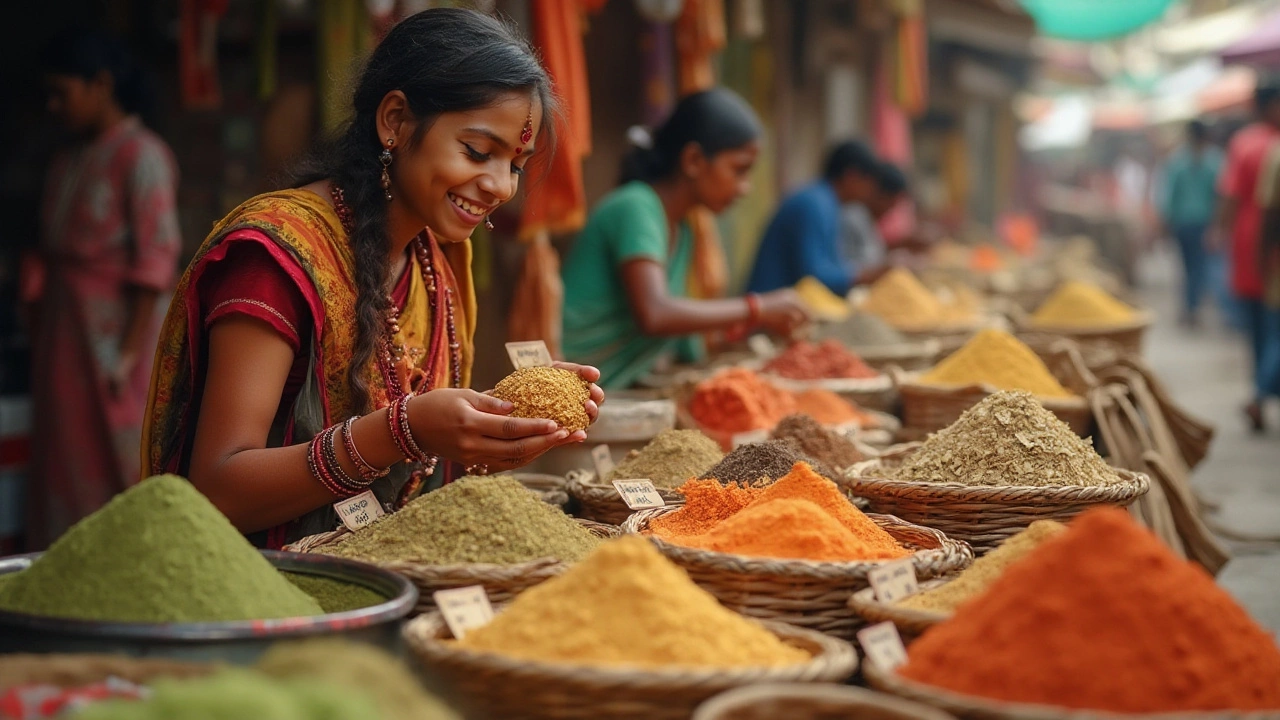
Using Natural Additives for Enrichment
Enhancing your homemade topsoil with natural additives is like giving an extra boost to your garden’s vitality. These additives not only improve the nutrient content but also enhance the structure and water retention capacity of the soil. Choosing the right natural additives depends on the specific needs of your garden, but there are a few tried-and-true options that stand out for their beneficial properties.
One of the most effective natural additives is bone meal, a powder made from finely ground animal bones. It’s rich in phosphorus, which is crucial for plant growth as it helps in root development and flowering. Adding bone meal to your topsoil mix can significantly improve bloom output and bolster the resilience of your plants. It’s best to apply bone meal during the planting time or mix it in the soil during a turnover to allow the nutrients to seep in gradually.
Another popular choice is green sand, mined from ancient sea deposits. Known for its high content of glauconite, green sand is an excellent source of potassium and iron, important nutrients that promote better growth and disease resistance. Unlike some additives, green sand releases its minerals slowly, making it an ideal choice for sustainable, long-term enrichment. Spread it during the spring to prepare your garden for the growing season.
"The soil is the great connector of lives, the source and destination of all." - Wendell Berry
Adding eggshells is a simple yet effective way to enrich your soil with calcium, essential for the cellular structure of plants. Crush and sprinkle them into your topsoil, or better yet, mix them into your compost pile where they’ll integrate naturally over time. Calcium-deficient plants often show signs of stunted growth and leaf curl, so regular incorporation of eggshells can prevent these issues.
Seaweed, either fresh or as an extract, is a well-regarded additive due to its array of essential minerals like magnesium and boron, and its trace elements which promote robust plant health. Seaweed also acts as a natural mulch, helping to reduce soil compaction and improve moisture retention. Use it directly on the soil or brew it into a tea for a nourishing plant tonic.
Here’s a quick comparison of some key additives:
| Additive | Key Nutrients | Application Suggestion |
|---|---|---|
| Bone Meal | Phosphorus | Apply during planting |
| Green Sand | Potassium, Iron | Spread in Spring |
| Eggshells | Calcium | Mix with compost |
| Seaweed | Magnesium, Boron | Use as mulch |
The beauty of these natural additives lies in their origin. By utilizing what nature provides, you not only enrich your soil but also contribute to a more sustainable gardening practice.
Environmental and Economic Benefits of DIY Topsoil
Embarking on the journey of creating your own topsoil holds numerous environmental benefits that extend beyond the confines of your garden. One of the most significant advantages is waste reduction. By recycling kitchen scraps, garden trimmings, and other organic waste, you significantly decrease the amount of trash headed to landfills. It's estimated that up to 30% of the average household's waste is compostable, meaning it can be transformed into valuable topsoil instead of rotting in a landfill where it produces methane, a potent greenhouse gas.
Producing your own topsoil also conserves natural resources. Traditional topsoil extraction can lead to erosion and depletion of land quality elsewhere. By reducing the demand for commercially available topsoil, you contribute to preserving these ecosystems. Additionally, the use of natural resources, such as peat, which is often harvested destructively from precious bogs, declines as home-composted materials step in as eco-friendly alternatives. It promotes a sustainable cycle of growth and decay, respecting nature's processes that replenish our gardens holistically.
The economic benefits of DIY topsoil are equally compelling. Store-bought soil, especially of quality caliber, can be surprisingly costly, particularly for large gardening projects. By creating it yourself, you not only cut down on these expenses but also assure control over the quality of your soil mix. It enables an adventurous gardener to tailor the composition to their garden's specific needs, whether it's increasing the loam for better water retention or adjusting the pH levels to suit particular plantings. As the popular gardening author, Eliot Coleman once remarked,
"The quality of your soil determines the quality of your plants. Don't skimp on it."
Moreover, the effort of making your own topsoil can also provide educational and gratifying experiences. Involving children in this process, for instance, teaches them about the cycles of life, waste management, and environmental stewardship. This simple act creates a ripple effect that fosters a deeper appreciation for nature in the next generation while investing in a more sustainable future.
Considering the growing interest in sustainable living and self-sufficiency, creating topsoil works in tandem with these lifestyle choices. It fits well with other environmentally conscious practices like rainwater harvesting and zero waste initiatives, further aligning one's lifestyle with broader ecological integrity goals. Let's not forget the rewarding connection to your garden - there's something profoundly satisfying about seeing an expanse of flourishing plants, knowing that they owe their health to your lovingly crafted soil.
Finally, here's a quick snapshot of how DIY topsoil creation impacts both individual households and the environment at large:
| Benefit | Impact |
|---|---|
| Waste Reduction | 30% of household waste redirected |
| Cost Savings | Potentially significant reduction in gardening expenses |
| Environmental Conservation | Reduced demand for raw soil extraction |
| Educational Value | Promotes understanding of ecological cycles |
Thus, creating your own topsoil becomes a multifaceted activity—a delightful pursuit where economics, education, and ecology intertwine seamlessly.
